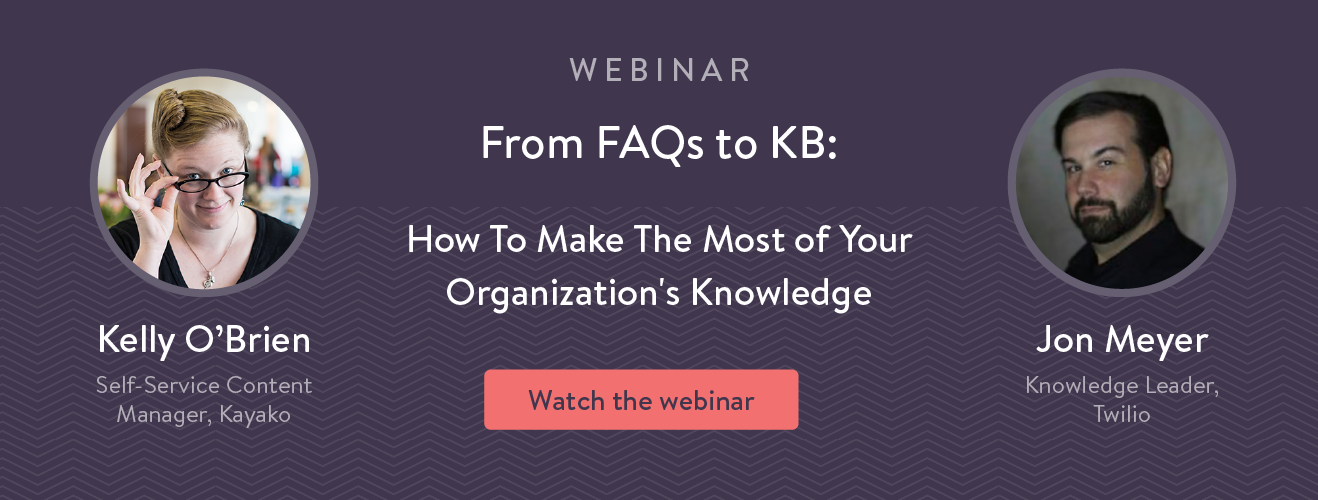There are a lot of mixed messages in Customer Supportlandia these days.
“We should be delighting our customers with pizzeria searches and long conversations.”
“Social Media is *the* new support channel.”
“Let’s give customers a multichannel experience and let *them* choose how they want to contact us.”
The result? Tragically overstuffed support websites. Tiny search boxes, filters, categories, tutorials, FAQS, forums, social media, and a buffet of live help options that scream: “We care! We care! We have so many ways to help you!”
But let’s step back to answer a more fundamental question: When you land on a support site, what are you – or any customer – looking for? A channel or an answer?
I’m about to expose a fatal (and expensive) assumption that is holding back customer service organizations.
Most customer service leaders now believe that if a customer is contacting their company, the #1 thing customers want is access to live support reps. Not true. Nobody’s got time for IVRs, transfers, and response times. Who has ever had a question and said, “I can’t wait to find my phone and call!”
Think about it: does it make sense to be faced with a convoluted support page, then choose between email, chat, and phone, only to enter another maze of options? That would be wonderful if having more choices leads to a faster resolution, but it doesn’t.
What customers want is to have their case resolved quickly and effortlessly, regardless of channel.
How a $0.25 question turns into a $2 call
Let’s expand on the most common scenario customers have when trying to reach out to a business: most customers visiting your company’s support site are there to resolve simple, common questions.
But there’s no clear answer on the website. Too many or irrelevant FAQs and poorly organized search results make it tough to read. An overwhelming number of options make it impossible to decide where to click first. Exasperated, the customer picks up the phone.
Now a live rep is on the line. It’s very possible that this rep has answered this exact question fifty times before lunch. The queue is stuffed with 15 other simple questions, forcing the rep to quickly scan tickets, potentially making mistakes doing so. This stalls hold and response times further.
What if your customer could go through a self-service process? The cost would be pennies per contact. The customer would get their answer and they move on.
Instead, your company’s price per contact jumps from > $.25 of self service to over $2 for a live agent. (Note: $2 is probably the cheapest you can get for live assistance, generally for email support. Most phone calls, even if outsourced, cost over $6 per call.)
And that is a generous underestimation of the impact. Think about what else is happening while you struggle to get your customer from Point A to Point B. Your branded chat window stares back at one very frustrated customer. Whatever feelings your brand projects – reliable, sexy, cutting-edge – it’s not what customers remember after this waiting game.
Eventually, the resolution of this customer case is marked as a success in your book. The truth is though, every additional interaction adds up to higher contact costs and an incrementally less loyal customer.
Even if you have a big budget, you can’t afford it
I’m surprised to hear how many service leaders think that throwing more money into hiring agents and creating new shifts is the answer to customer care. Leaders should be doing everything they can to help minimize those calls in the first place.
The direct cost of this approach is consistency. It takes time to train and prep backup call center reps for the seamless, high quality customer experience you should be targeting. It can take hours, even days for backup agents to make a dent in a fat queue. Reps pulled from other places can’t absorb the level of detailed information to perform effectively at the same level as their colleagues. It’s stressful for them and reduces the quality of their work and results in those hit-or-miss service experiences we’re all familiar with.
The indirect cost is customer loyalty. Loyalty can be difficult to calculate, but tends to decrease with each additional step in their support experience, from clicks through your site to hold times. The risk of customer churn grows with each barrier to an effortless experience: the frustrating reality is that after a series of hassles, reps eventually just direct customers to a solution that was available with a simple knowledge search. Why put them through a pinball machine just to have a rep deliver a knowledge base article? Customers are not brand loyal to companies that require them to repeat information, switch channels and call back for a complete resolution.
In other words, you can begin to measure the financial impact of your support operations by calculating cost per contact with live agents. But to get a complete picture to take to your exec/leadership team, you would have to factor in customer churn that stems from a poorly planned support journey and burdensome customer experiences. Even if you can throw money at the problem, it’s pretty clear you and your brand still can’t afford it.
Why self-service should be on your support center roadmap
Self-service is the most effective way for customers to get the answers they need and reduce workload for live support teams.
Great self-service starts with a searchable support portal that’s easy to navigate and equipped to escalate customers to a better suited channel when they need it.
Reinvest the thousands, even millions you save in resources per year into better, smarter support. This could mean creating new roles that strengthen your support mission such as data analysts, writers, and designers.
An entirely new slate of possibilities opens up for your company when you really begin to invest in the idea that self-service is the future of customer retention.


